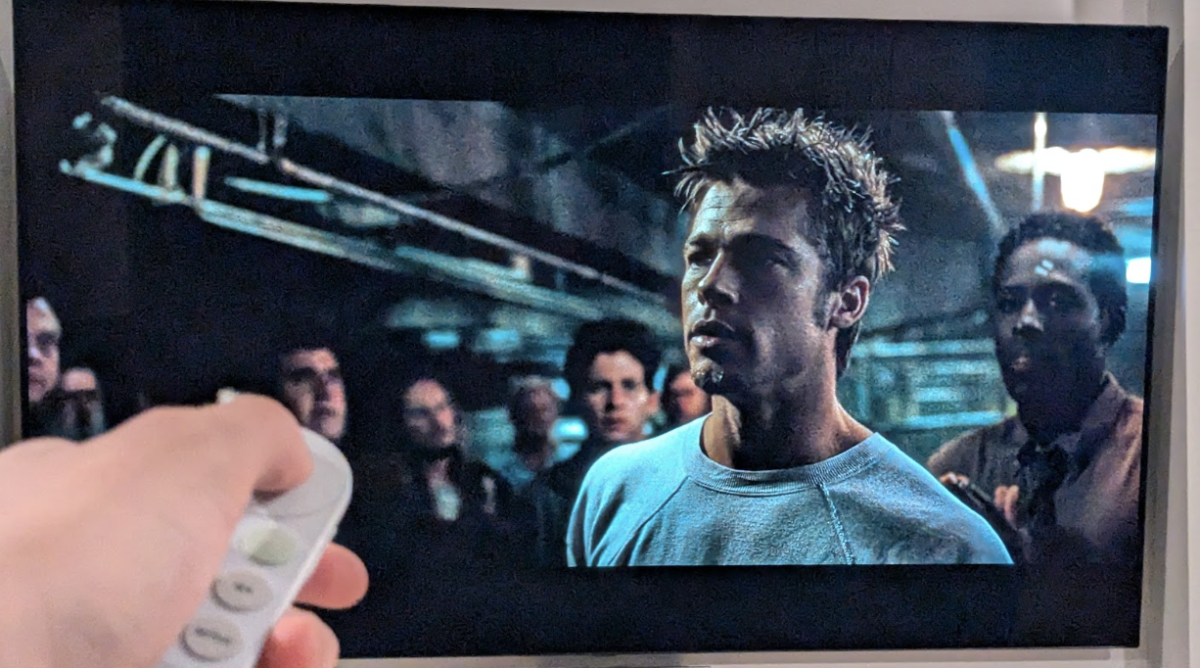The first two rules of Fight Club are not to talk about Fight Club. These rules were canonized 25 years ago with the release of David Fincher’s “Fight Club” in 1999. In those 25 years since its initial release in theaters, the film generated more of an impact amongst fans than just its iconic lines. The movie’s depiction of toxic masculinity resonated with the toxic males that the film was trying to criticize. All of this through the lens of the main character Tyler Durden, played by Brad Pitt. After 25 years, the question still remains: How did so many people misinterpret the film?
David Fincher’s intentions with the movie are not vague. In an interview with The Guardian, he explicitly stated that Tyler Durden is a negative influence on the unnamed main character, played by Edward Norton. At the end of the movie, Durden is revealed to be but a figment of the main character’s imagination. Durden is characterized as a violent person who is unsatisfied with life and the general state of the world. He channels his own feelings of masculinity through his violence and terrorism, as he is the founder of the eponymous fight club. He believes that people are being defined by the things they own, rather than living up to their own purpose. His method of dealing with this to blow up buildings in order to destroy corporatism.
There is a certain corner of the internet that views Durden as a role model, and have defined much of the film’s legacy in their adoration of him. These people tend to belong to the Pickup Artist (PUA) community, a collection of men’s rights groups usually manifesting on online discussion boards. These people view the story of Durden as a story of alpha males and beta males. Durden, the alpha, dominates the unnamed main character, with his destructive tendencies and antisocial behavior seen as admirable qualities by the PUA community. The movie is seen as a story of redemption for the main character, as he becomes an alpha male by embracing the part of himself that is Tyler Durden.
At the end of the movie, the main character fires a bullet into his own mouth, which kills the part of him that is Tyler Durden, however his plan to destroy various buildings still comes to pass. The movie closes with the main character embracing his love interest Marla as they watch the buildings explode together. This seems to be representative of the main character moving past the influence of Durden, who had an exclusive relationship with Marla. Despite this, the PUA community continues to idolize Durden, including the relationship between him and Marla, believing that the main character should have abandoned Marla in order to solidify his alpha male status.
Fincher, the director of “Fight Club,” is known to be a very meticulous filmmaker. He does many takes to get the one he deems as perfect. This mentality towards making films and the misunderstanding of “Fight Club” may be represented by Fincher’s most recent film “The Killer.” The film follows a hitman, played by Michael Fassbender, who takes a very meticulous approach to killing. His mantra is repeated in his head throughout the entire movie. It boils down to being calculated, careful, and not screwing up. The movie makes it clear that through it all, the eponymous killer is quite good at his job. Of course, the movie opens with him botching an operation, killing the wrong person.
This seems to reflect Fincher’s experiences with “Fight Club.” He needed everything to be perfect, yet in the movie that would end up as his most iconic, it was misinterpreted. Whether he did something wrong or the audience simply failed to catch it, “Fight Club” lives on as a central text for the people it was meant to mock. Despite this, the future of Fight Club isn’t doomed. Reputations change with the tides, and 25 years later “Fight Club” may be reevaluated and people will realize just how anti-alpha the movie truly is. All that is truly known is that it’s unlikely the first two rules of “Fight Club” will be followed any time soon.
















































































